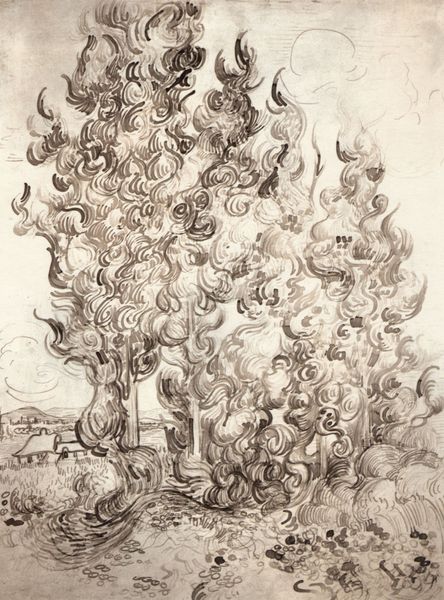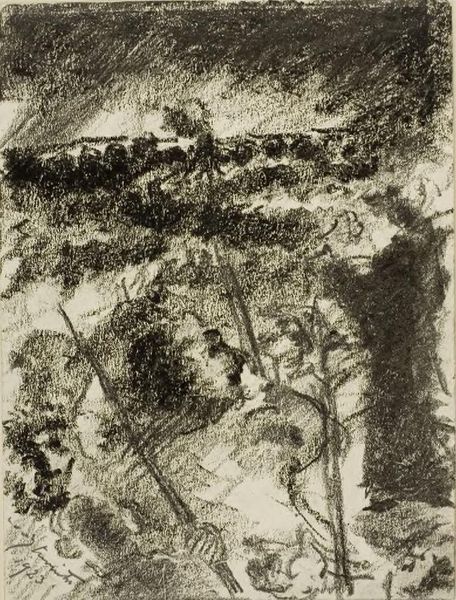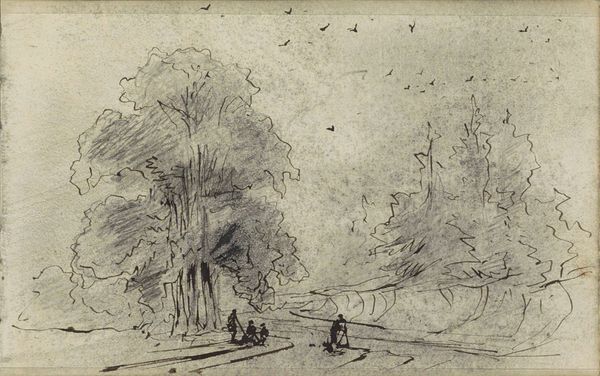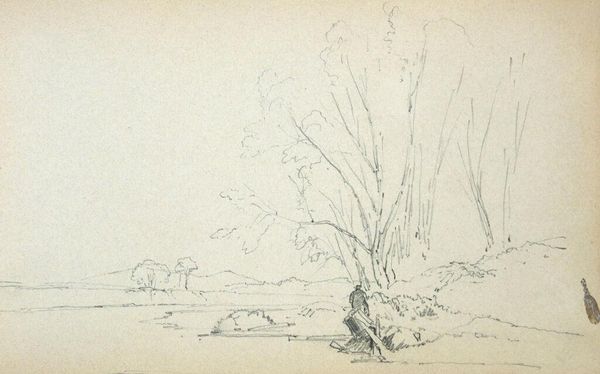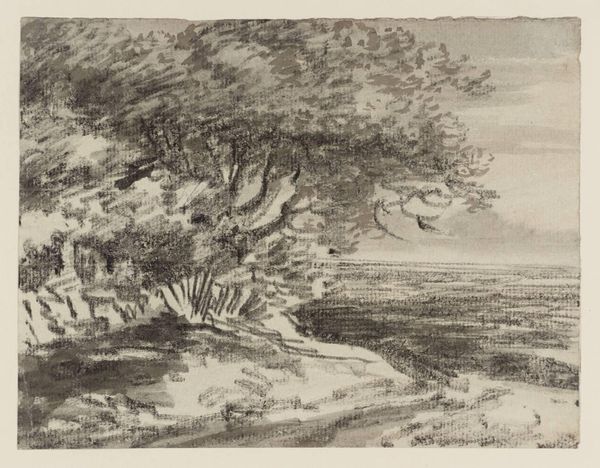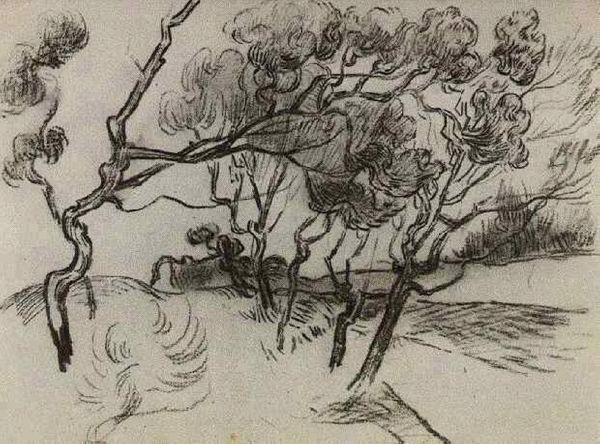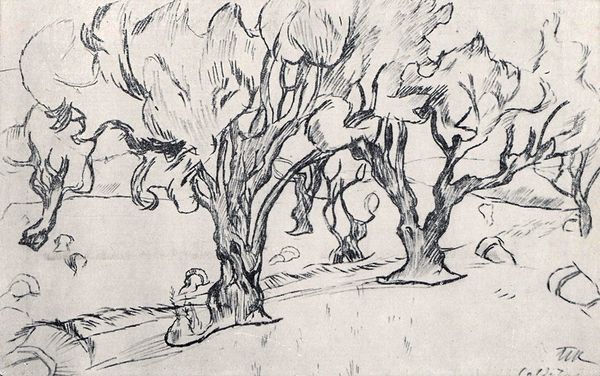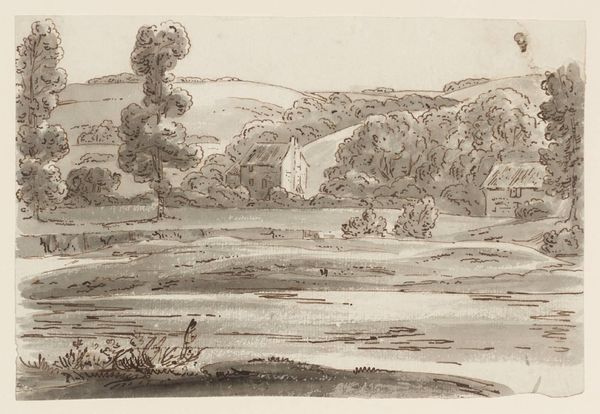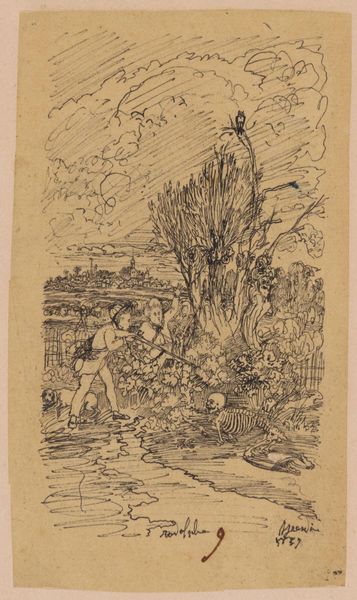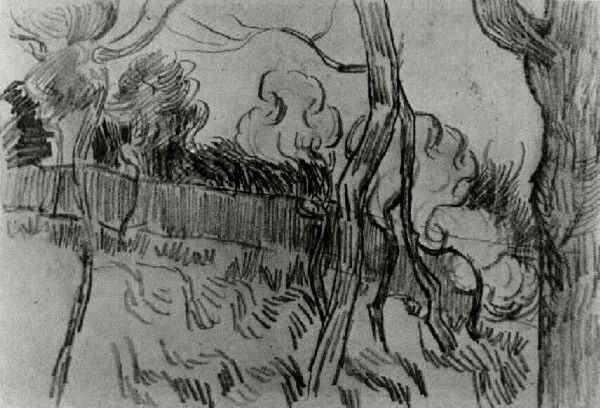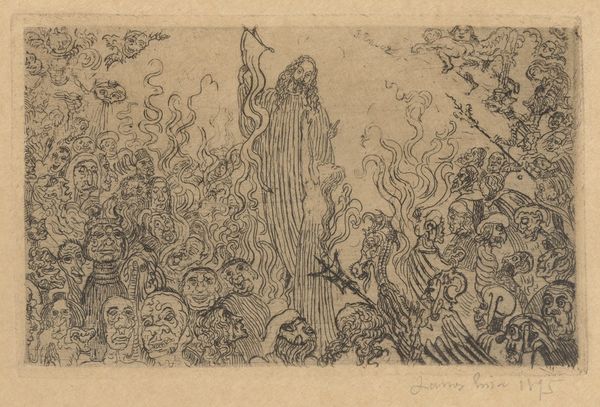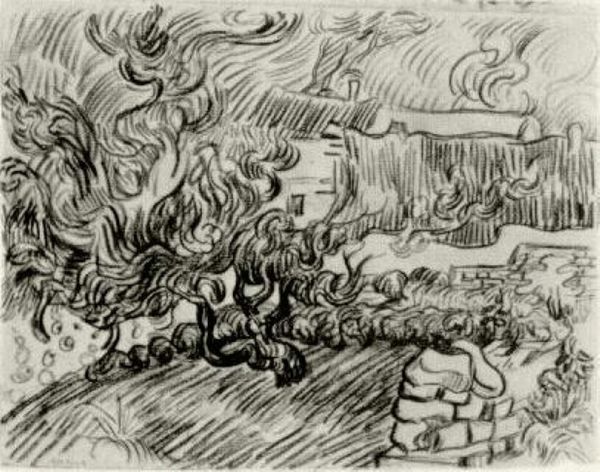
drawing, c-print, ink
#
drawing
#
impressionism
#
landscape
#
c-print
#
figuration
#
ink
#
line
#
post-impressionism
Copyright: Public domain
Curator: Vincent van Gogh created this ink drawing, titled "Cypresses," in 1889. It’s remarkable, rendered almost entirely with swirling lines. Editor: There’s a feverish quality to it. The cypresses feel less like trees and more like dark flames reaching upwards. An anxious energy seems to pulse right off the page. Curator: Indeed. The cypress has been a symbol of both death and immortality, a visual manifestation of mourning that predates even the ancient Greeks. Van Gogh was exploring the symbolic resonance of this tree as something that bridges earth and sky. He saw them as vital expressions of the landscape. Editor: The positioning of the two figures grounds that reading further, right? We have this image representing both death and eternity, but these figures represent a possible human future, and by placing them there, he situates us as interpreters within this liminal space. It is a profound artistic statement. Curator: The two figures near the base introduce an element of earthly observation and humanity into this powerful, almost ecstatic vision of the natural world, reminding us of his broader engagement with human struggle and emotion. It’s impossible to consider the painting outside of Van Gogh’s struggles with mental illness and his isolation at the Saint-Paul-de-Mausole asylum in Saint-Rémy, yet it's hard not to also appreciate its enduring statement. Editor: Absolutely. Though we have this sense of isolation, this reaching to some unknown immortal space, we cannot forget his work in celebrating the lives of peasants and the working class. "Cypresses," especially in the context of the figures he includes, does seem to honor life as much as it ponders the beyond. It is about the intersection between existence and the cosmos. Curator: The way Van Gogh has turned his ink lines into living currents that bind humanity to landscape and symbol reminds me of similar spiritual-natural investigations throughout art history, always prompting renewed awareness of the relationship between mortality and the symbolic languages we create to cope with it. Editor: "Cypresses" urges us to look outward and acknowledge humanity’s complex position within natural cycles and their metaphorical representations in our minds and art.
Comments
No comments
Be the first to comment and join the conversation on the ultimate creative platform.
